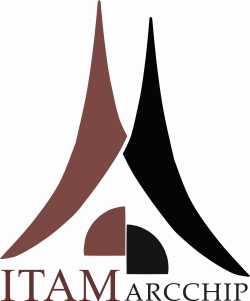Ústav teoretické a aplikované mechaniky › Oddělení › diagnostiky a konzervace památek › Laboratoř diagnostiky I
Head of Laboratory
Ing. Riccardo Cacciotti, Ph.D.
The Laboratory of diagnostics I (Built Heritage Diagnostics) aims at collecting the necessary data for the identification of the causes of pathologies which affect built heritage, through the application of compatible investigation techniques.
Our diagnostic work is based on a comprehensive methodology which considers qualitative and quantitative approaches; the qualitative approach being mainly based on direct observation of the structural damage and material decay as well as historical and archaeological research, and the quantitative approach mainly on material and structural tests, monitoring and structural analysis.
Activities
The Laboratory focusses on research and consultancy work related to three thematic areas:
- A - NDTs and MDTs (Non-destructive and minor destructive techniques) both laboratory and in-situ.
- B - Damage documentation and evaluation tools.
- C - Monitoring systems.

Research
The laboratory is involved in research activities aimed at developing new tools and techniques and improving existing one, for a more compatible and less invasive diagnostic approach to built heritage protection. These activities are mostly concentrated on:
- Advanced building inspection tools (e.g. MONDIS apps)
- Development and validation of prototypes for innovative in-situ measurements (e.g. moisture monitoring system)
- New testing criteria and guidelines for historical materials and structures (WDR testing protocol)
- Thermography, x-ray and ultrasound investigation.
Consultancy
The team provides consultancy services for the identification and diagnosis of building damages. In particular the Laboratory supports the individuation of optimal solutions by performing highly specialised in situ measurements and by implementing purposely designed monitoring strategies.
Integrated Mobile Unit
The Laboratory is actively involved in the management of the Institute’s Integrated Mobile Unit (IMU). This unit, further the instrumentation employed for conventional building inspections and diagnostic measurements, it can be also equipped with documentation tools for emergency situations allowing fast assessment of building conditions.
Results
MONument Damage Information System (MONDIS)
MONDIS (MONument Damage Information System) is a former research project run by the Department of Cybernetics in the Faculty of Electrical Engineering at the Czech Technical University in Prague and the Institute of Theoretical and Applied Mechanics at the Czech Academy of Sciences. The main project objectives include the integration of existing knowledge and expertise from the field of cultural heritage protection, including the enhancement of cooperation and exchange of experience. The MONDIS project aims to support professionals addressing the structural and technical conditions of heritage buildings and working on designing appropriate measures or structural interventions. This is done using a knowledge base intended for documentation and analysis of the defects and damages in heritage buildings.



MMS (Moisture monitoring system)
The system measures the change in electrical resistance due to the presence of water. It is composed of an electronic board and brick instrumented with graphite electrode-couple sensors. It is mainly designed for the laboratory evaluation of rain penetration in masonry components. The system successfully monitors the change in moisture content correctly detecting storage and transport mechanisms. Compared to similar systems it is cost-effective with easy fabrication and installation, fostering non destructive, repeatable measurements with adequate space and time resolution, identifying transient conditions at different depths into building components. Further developments are ongoing.


Thermography
The laboratory has conducted a series of studies on the characterisation of building materials through the adoption of integrated non-destructive methods in order to establish possible synergies for the application in the field of building diagnostics. Thermography is a non-destructive method that captures the radiation in the infrared range of the electromagnetic spectrum. Its main advantage is the ability to assess moisture conditions over large areas of the building envelope, localizing damp zones either passively (no external heating) or actively (i.e. by supplying deliberately heating with suitable heat sources). Because different physical processes may interact with each other, sometimes thermograms are misleading and false negative might be produced (e.g. due to the warming up of surroundings air, inducing a distortion of thermal patterns and masking of the cooling at the surface).
Ultrasound investigations
The ultrasonic technique is based on the transmitting (or reflecting) pulse method. Ultrasound waves propagate through a material at a velocity and with a transmittance that are a function of physical material properties, such as the elastic modulus and density and more importantly moisture content. The output might be tentatively transformed into percentage of moisture content after calibration for the specific material made by comparison with gravimetry.
Documenting visual properties of surfaces
- Colour change of surfaces
- Reflectance spectrometry in UV-VIS-NIR light and measurement of color change in colorimetric coordinates
- Change of colour in a representative area by means of portable flatbed scanner
- Change in reflectivity of surface indicating whether surface is shinny or dull as a measure of surface alternation likely due to degradation
Documenting 3D shape of objects by means of optical methods
- Photometric stereo
- Shape from Motion
- Laser profilometry
- Detection of delaminated rendering by sound of knocking
Publications
- Cacciotti, R. - Blaško, M. - Valach, J.: A diagnostic ontological model for damages to historical constructions. J. Cult. Heritage 16(1), 40–48 (2015)
- Cacciotti, R., Valach, J.: Inspecting historic buildings using ontologies. In R. Amoêda, S. Lira, C. Pinheiro (eds.) REHAB 2015 - Proceedings of the 2nd International conference on Preservation, Maintenance and Rehabilitation of Historical Buildings and Structures, 22-24 July 2015, Porto, Portugal. Barcelos : Green Lines Instituto para o Desenvolvimento Sustentável, s. 715-724 ISBN 978-989-8734-07-5
- Cacciotti, R.: Integrated knowledge-based tools for documenting and monitoring damages to built heritage. In Y.N. Yen, K.H. Weng, and H.M. Cheng (eds.) The International Archives of the Photogrammetry, Remote Sensing and Spatial Information Sciences, Volume XL-5/W7, 2015, 25th International CIPA Symposium 2015, 31 August–4 September 2015, Taipei, Taiwan , pp. 57-63
- Cacciotti, R. –Valach, J.: The MONDIS Project: Semantic Web and the Protection of Historic Buildings. In (eds.) R. Scopigno and G. Guidi, Digital Heritage International Congress 2015, Granada Sept.28-Oct.2, Vol. 2, IEEE, 2015, Paper ID 125 (ISBN 978-1-5090-0047-0)
- Cacciotti, R., Drdácký, M., Modena, C., and da Porto, F. (2015) New Integrated Knowledge-Based Approaches to the Protection of Cultural Heritage from Earthquake-Induced Risk.In (ed.)Roberto T. Leon, Improving the Seismic Performance of Existing Buildings and Other Structures 2015. American Society of Civil Engineers, pp. 109-120, ISBN (PDF): 978-0-7844-7972-8. http://dx.doi.org/10.1061/9780784479728.010
- Cacciotti, R., Valach, J., Wolf, B. :Innovative moisture monitoring system for brick masonry constructions. Construction and Building Materials, 2018, 186:598-614.
- Cacciotti, R., Pospíšil, S., Kuznetsov, S., Trush, A. A proposed calibration procedure for the simulation of wind-driven rain in small-scale wind tunnel. Experimental Techniques Journal, 2018, https://doi.org/10.1007/s40799-018-0290-x



